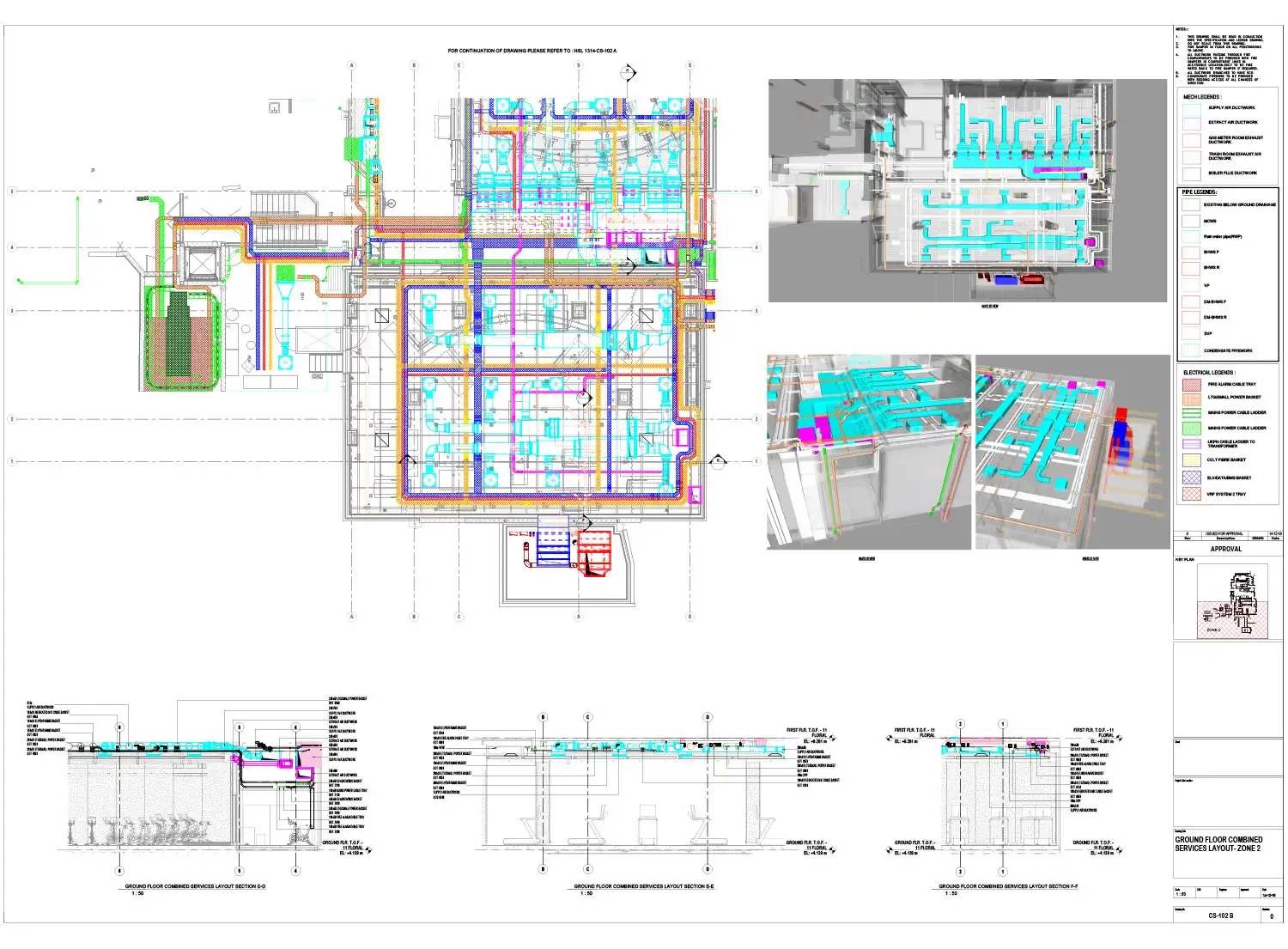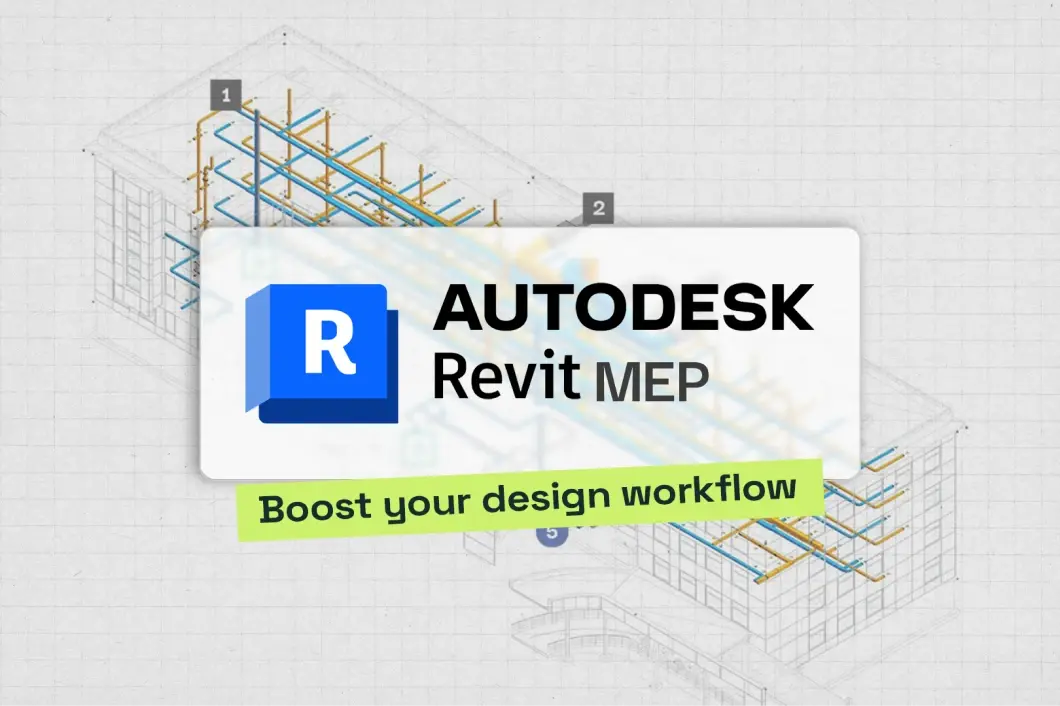
In today’s fast-evolving MEP industry, engineers need more than just theory-based knowledge to stand out. With the rise of BIM MEP services, employers are on the lookout for professionals who can showcase their hands-on experience and technical expertise. That is where a strong MEP portfolio becomes your best ally. But here’s the catch, traditional classroom learning rarely equips you to build one. Enter Project-Based Learning, an approach that not only sharpens your practical skills but also helps you create a portfolio that speaks volumes.
Whether you are a fresher exploring MEP jobs or a working professional aiming to upskill, project-based learning is your shortcut to a job-ready profile. Let us dive into how it works and why it is revolutionising the way MEP engineers learn and grow.
Why a Strong Portfolio is Important for MEP Engineers
In the competitive landscape of the MEP industry, having a strong MEP portfolio is no longer optional; it is essential. A portfolio helps you demonstrate all of that in one powerful document.
Here is why it matters:
-
Showcases your hands-on experience with MEP drawings, models, and project documentation
-
Demonstrates your proficiency in tools such as Revit MEP software and other MEP software
-
Highlights your involvement in real or simulated MEP projects using industry-standard workflows
-
Helps recruiters visualise your ability to contribute to MEP infrastructure development
-
Make your application stand out for top MEP jobs and internships
-
Reflects your creativity, problem-solving ability, and understanding of MEP design
Limitations of Traditional MEP Learning Methods
While traditional classroom-based learning has long been the go-to method for training MEP engineers, it often falls short in preparing students for the demands of today’s MEP industry. Without hands-on experience or exposure to real-world tools like Revit MEP, many learners find themselves struggling to build a job-ready MEP portfolio.
Also Read: How Novatr’s BIM MEP Course Makes You Industry-Ready in 6 Months
Key limitations include:
-
Lack of training on industry-relevant MEP software and Revit MEP software
-
Minimal exposure to real-time MEP projects and coordination challenges
-
No structured guidance on how to create a portfolio for job applications
-
Inadequate opportunities to practise MEP BIM modelling
-
Little focus on developing critical skills in MEP design and system integration
-
No focus on modern portfolio-making ideas or tools like the best portfolio websites
What is Project-Based Learning and How It Works
Project-Based Learning (PBL) flips the script. Instead of passive learning, you dive into real-life projects. You get a brief (like you would from a client), work on deliverables (think MEP drawings, modelling, and calculations), and review your work with expert feedback. It is a hands-on, engaging method that mirrors actual MEP industry workflows.
For instance, in a project, you might use Revit MEP software to model HVAC layouts, coordinate electrical and plumbing systems, and generate construction-ready documents. The goal? Learn by doing, not just reading.
PBL provides context and purpose to your learning. You understand not only what to do, but why you are doing it. And every project you complete becomes a golden addition to your MEP portfolio.
Benefits of Project-Based Learning for MEP Professionals
So, why should a budding or experienced MEP engineer opt for project-based learning? Here are the juicy benefits:
-
Real-World Exposure: You get to simulate actual site conditions and industry problems.
-
Tool Mastery: Repeated hands-on use of tools like Revit MEP, MEP software, and MEP BIM modelling solidifies your technical foundation.
-
Creative Confidence: You learn portfolio-making ideas by compiling real outputs into structured formats.
-
Job Readiness: Completing projects aligned with industry expectations prepares you directly for MEP engineer jobs.
-
Portfolio Development: Every finished project becomes part of your evolving, impressive MEP portfolio.
All this without spending years in outdated classrooms!
Also Read: How MEP Engineers Collaborate with Architects and Civil Engineers
How It Helps You Develop Real-World BIM Skills & Portfolio Making

Project-based learning bridges the gap between theoretical knowledge and industry expectations by immersing you in real-world MEP projects. Through hands-on application of Revit MEP and other key MEP software, you learn how to think, model, and deliver like a professional MEP engineer. Most importantly, every project you complete becomes a tangible asset in your evolving MEP portfolio, making you stand out in the MEP jobs market.
Here is how it helps:
-
Builds strong foundational and advanced skills in MEP BIM modelling
-
Teaches project workflow from design to documentation using Revit MEP software
-
Enhances your problem-solving and system coordination skills
-
Develops presentation-ready content for your MEP portfolio
-
Provides insight into portfolio-making ideas and storytelling techniques
-
Ensures you are job-ready with practical experience aligned with MEP engineer jobs
What to Include in an Effective MEP Portfolio
A well-structured MEP portfolio is your ticket to grabbing the attention of top recruiters in the MEP industry. It should reflect your technical capabilities, creative thinking, and hands-on experience with tools like Revit MEP and other essential MEP software. The key is to present your work in a clean, organised, and visually compelling way.
Here is what to include:
- A brief personal introduction tailored for MEP engineer jobs
- Detailed case studies of your best MEP projects
- High-quality images of MEP drawings, 3D models, and system layouts
- Explanation of your role in MEP design and MEP BIM modelling
- A list of tools used, such as Revit MEP software
- Links to your online portfolio on the best portfolio websites like Behance, Coroflot, or personal websites
- Contact details and downloadable versions of your work
Also Read: Top 50 MEP Interview Questions & Answers 2025
How Novatr’s BIM MEP Course Supports Portfolio Building
Novatr’s BIM MEP course is strategically designed to help aspiring MEP engineers build a competitive and professional MEP portfolio that showcases real-world skills. Here is how the course supports portfolio development:
-
Real-World Projects – Work on practical MEP projects under the guidance of industry experts
-
Hands-On Tool Training – Get skilled in Revit MEP, MEP software, and MEP BIM modelling workflows
-
Structured Portfolio Guidance – Step-by-step training on how to create a portfolio for job opportunities
-
Personal Branding Support – Learn innovative portfolio-making ideas and how to use best portfolio websites
-
Industry-Centric Curriculum – Tailored to match real-time MEP engineer jobs and modern MEP infrastructure needs
-
Transparent Course Information – Clearly outlined MEP course fee, MEP course duration, and fees
-
Expert Mentorship and Feedback – One-on-one guidance to fine-tune your MEP portfolio and presentation skills
Conclusion
The future of the MEP industry belongs to professionals who can demonstrate, not just claim, their expertise. A strong MEP portfolio, built through project-based learning, can be your gateway to top-tier MEP engineer jobs and global opportunities.
So, if you are still relying on outdated learning methods or struggling with how to create a portfolio for job applications, it is time to switch gears. Explore project-based learning, join a reputed BIM MEP course, and get started on your journey towards mastering MEP systems and building a career-ready portfolio that stands out.
Your portfolio is your personal brand; make it as remarkable as you are. Consider enrolling in the BIM Professional Program for MEP Engineers by Novatr stands out the most. For the latest updates, tools, and insights into the MEP and BIM industry, explore Novatr's Resource Page.
Was this content helpful to you



.jpeg)

.png)
.png)
